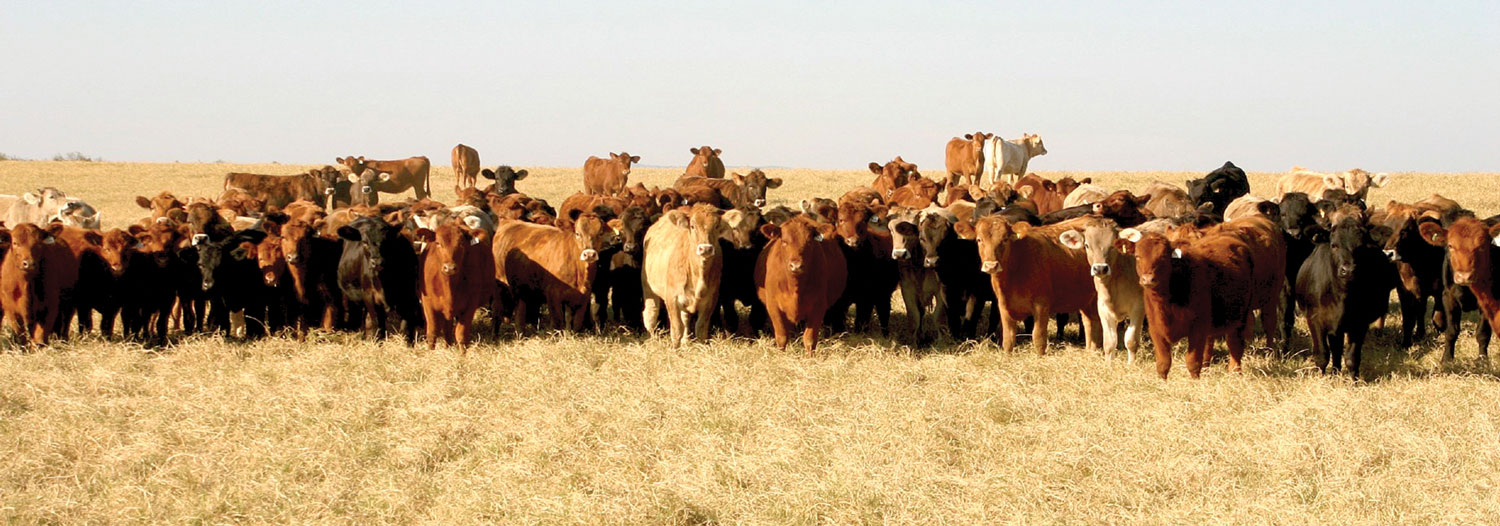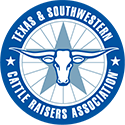Prepare Stocker Cattle for Success
The right nutrients and timely vaccinations can help stocker cattle transition well from the ranch to forage to the feedyard.
By Gary DiGiuseppe

Once calves have been weaned and are headed to grass, they need to be protected against the pathogens that lay in wait for them. Mark Spire, DVM, has some tips to keep those animals on the road to good health.
Spire, a technical services manager for Merck Animal Health, says that in some ways post-weaning calves are in good position to accept a new round of immunizations. They’ve started to develop an adult immune system, so they can respond well to vaccinations. Any residual antibodies from the mother’s colostrum, which protected them they were younger, won’t interfere with this round of vaccinations.
In Spire’s experience he has noticed that calves are generally weaned from August to October and January to February.
The forages the calves are headed to at these times of the year are usually low in mineral content. “We may not see the full bang for the buck we’d expect from our vaccinations because the trace minerals — particularly zinc, copper and selenium — may not be there in adequate amounts to maximize the immune response.”
This means a good supplemental mineral program is crucial for a forage feeding operation.
What is the best way to deliver minerals to calves?
Some operations receiving newly-weaned cattle add minerals directly to the feed. Others provide minerals in a salt-mineral mix. Still others use tub feeders with a molasses-based mix.
Spire thinks the molasses tub may be the best route, saying, “The cattle really seem to like and adapt to them rapidly. Even from the first day, they’ll get to those tubs and use them.” Other methods, by comparison, may not provide enough mineral intake.
Spire notes that for the first 10 days after arrival, the calves’ feed consumption is usually depressed, so they may not be taking in adequate quantities of the minerals needed to boost their immune systems. He recommends against using injectable mineral products upon arrival of the calves without knowing their specific needs. The injectable mineral may cause injection site lesions and may dampen the calves’ response to vaccines due to inflammation.
Critical 2 weeks
An upon-arrival trace mineral program is necessary because the stocker operator may not know the management policies at the calves’ previous location. Or the calves may have come from a number of different locations and that alone can increase the risk of disease.
Spire says, “Cattle that are put together by a marketing service, or mixed at an order buyer’s facility and then shipped, have a lot higher risk of disease — not from the way they were handled at those facilities, but because when we start mixing populations of cattle, we have a good opportunity to start sharing viruses and bacteria.”
On the other hand, while the risk of respiratory infection is lower if calves come from a single source, the “bugs” they’re either carrying or exposed to in their new environment could be activated.
Spire says even in operations with an inherently low virus or low bacterial population, “As soon as we put stressors on the animals — the stress of hauling, the stress of mixing cattle, the stress of adapting to the new pens, or new feeds or new water, at their new location — it seems to activate the viruses and the bacteria. Whether they’re commingled and brought in as mixed cattle or come from a single source, those first 2 weeks are absolutely critical in how we manage the calves.”
Knowing the vaccination history of the animals is valuable. When they’re processed upon arrival at the forage facility or stocker operation, the personnel can know the calves are now receiving boosters and less risk of illness can be expected.
Knowing the history of the calves’ health program allows the experienced operator to look for weaknesses in the prior vaccination program and be prepared to address diseases they’ve seen in the past upon delivery of the calves.
“If we don’t know their vaccination history, then we don’t know what level of immunity a calf may have,” Spire says. “So we tend to give a lot of components within a vaccine. That really adds to the complexity of stimulating the immune system and having a calf that’s receptive to activation of the immune system.”
Ranchers handling newly-shipped cattle should be aware of infectious bovine rhinotracheitis virus (IBR or “rednose”), multiple strains of the bovine viral diarrhea (BVD) virus, and 2 bacterial diseases, Pasteurella multocida and Mannheimia haemolytica.
Depending on the operation, vaccines may also be needed for bovine respiratory syncytial virus (BRSV), parainfluenza-3 (PI-3), and Histophilus somni. And if the males have to be castrated, clostridial diseases, which tend to infect wounds, can produce a systemic and often fatal risk. These organisms include Clostridium septicum. C chauvoei, C perfringens, C novyi, and C sordellii. Spire says a typical program for newly arrived calves will incorporate a 5-way viral, a multi-component Pasteurella/Mannheimia vaccine, and a multi-component blackleg vaccine.
Calves should also be dewormed upon arrival. If the history of the cattle is unknown, Spire says, “They may be coming from multiple parts of the country. The odds are, through the summer, they’ve picked up a fairly significant parasite load.” The benefits to deworming include improved weight gain and performance of the animals and, he says, it will actually stimulate the animal’s immune system.
What’s the weather going to be like?
Another issue is the time of year. The majority of the U.S. calf crop is still born in the spring, so they get moved to grass operations in the fall. Forage quality and trace minerals will have declined from where they were earlier in the year, causing the calves to experience nutritional stress.
And then, as Spire says, there’s the weather.
He says, “You’re suddenly moving cattle from the southeastern part of the U.S. or Texas to Kansas or Nebraska in October or November. At this time of the year we start getting warm days and cold nights, with rain and occasionally snow. These cattle haven’t adapted to that type of environment and it actually puts a major stressor on them.”
This kind of weather means the calves need even higher caloric and protein contents in their diets just to maintain their normal bodily functions, and Spire says the receiving operation often hasn’t adjusted feed delivery to anticipate that extra need.
Some calves will be off their feed for the first 2 weeks after arrival. Others will adapt perfectly well to the new feeding situation and could overeat, causing a different imbalance.
Spire explains, “Calves will tend to eat what’s in front of them. If we have calves within the group that aren’t eating, that leaves more feed for the calves that are eating. This gives us the chance for some of those calves to overeat and develop subclinical acidosis or full blown acidosis. The signs associated with subclinical acidosis often mimic those of respiratory disease.”
In most cases acidosis does not produce readily observable symptoms, but it’s still enough to affect their intake and the metabolites in their systems. It also can make the calves appear to have respiratory disease, even when the pathogens that cause respiratory disease are not present.
It’s important to monitor feed delivery closely the first 2 weeks after the cattle arrive.
Review after the first 2 weeks
Once the crisis presented by the first 2 weeks has passed, the producer can review the initial vaccination program. Some product labels will indicate that the product should to be followed up with boosters. In those cases the time between the first and second vaccinations can vary from 3 weeks to 5 or 6 weeks.
Spire advises ranchers to follow label directions. “Some vaccines may not give us a long duration of immunity or may need boostering to reach full effectiveness,” he says. “If we don’t follow the recommendation for vaccines we can start seeing some diseases show up a little later, after the first round of vaccines are given.”
Among the vaccines presenting a threat from lapsed protection are the clostridials, particularly tetanus, which requires 2 doses, and BRSV. “Six weeks after we receive the cattle, we can start having issues with BRSV,” Spire says, “so it’s important that we follow the recommendations on the vaccine label and booster the product.”
Fall-weaned calf crops, Spire says, don’t tend to present many problems with eyes or feet. There may be some residual problems with some respiratory diseases and clostridials, and parasites could show up, particularly if there hasn’t yet been a killing frost yet.
Spring-weaned calves present different challenges. “After the initial feeding period we start getting into warm season grasses,” he says, “and we definitely have to emphasize pinkeye control in April and May.”
When it’s time to deliver the cattle to the feedlot, provide health records outlining the vaccination program to the feeder. This allows the feedyard manager to know what to look for upon arrival of the calves.
Work with your veterinarian to prepare your calves for the next step from the gate to the plate. Your efforts will keep buyers coming back to you for quality beef cattle.
“Prepare Stocker Cattle” is excerpted from the September 2014 issue of The Cattleman magazine.
